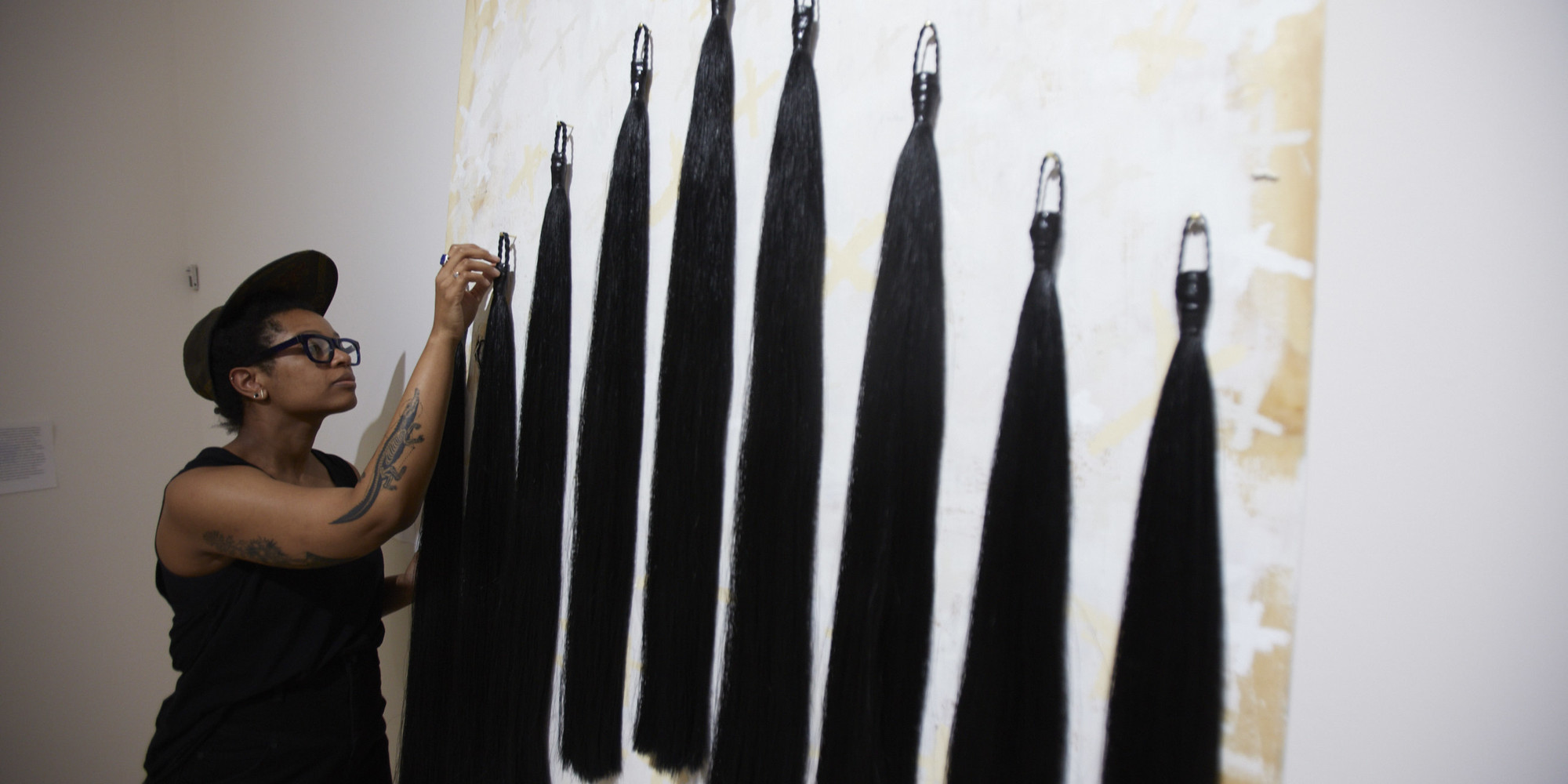
Totems of a Southern Heritage
Allison Janae Hamilton discusses the legacies of labor and landscape in the South.
Allison Janae Hamilton, Hanna Girma
Jul 30, 2019
The exhibition MOOD: Studio Museum Artists in Residence 2018–19, currently on view at MoMA PS1, joins together three artists who worked in proximity for a year through the Studio Museum in Harlem’s Artist-in-Residence program. While their practices are distinctive, all three use everyday materials to create landscapes shaped by personal experience.
At the entrance of Allison Janae Hamilton’s immersive installation at PS1, the viewer catches a glimpse of sharp silver palm fronds dripping in resin. It’s the beginning of a seductive siren call as hair, skull, wood, and rope morph into blackwater creatures that move across the floor and descend from the ceiling of the room. Photographs of young girls venturing through a through a subtropical Southern landscape line the walls, bathed in the alluring light of Wacissa, (2019) an unsettling underwater video projection. We spoke with Hamilton about the ways in which she uses natural elements as totems of her Southern heritage.
This interview was edited for length and clarity. Photos by Matthew Septimus
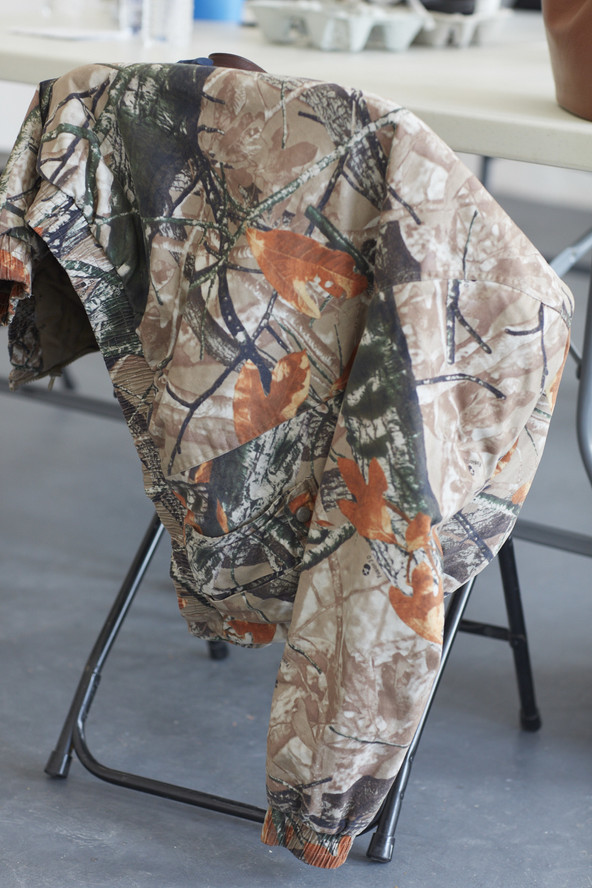
Allison Janae Hamilton’s jacket during exhibition installation
Hanna Girma: You shoot your photographs and video work in Florida. Do you also find objects and materials for your work there as well?
Allison Janae Hamilton: Sometimes Florida, also Tennessee, where the maternal side of my family is from. Sometimes things are found or, for example, the ouroboros alligator sculptures that I made last year (Untitled [Ouroboros], 2017), I got the skins from friends of friends who were hunting for the meat. Things that I find, like plant materials, are from when I go back home or I’ll try to source them up here if it’s something that grows along the entire East Coast. But the found objects or feathers and trimmings I get from surplus stores. But most everything that’s used that’s not found comes from family networks, friend networks.
How does your work deal with community and environment?
Sustainability is something that I think about. Climate change comes up in my work in a more narrative way because I’m trying to think about lived experience in a location through the lens of the landscape. As storms are becoming more intense, as climate change is making itself known in very physical, tangible ways, I am thinking through which communities are most vulnerable, more likely to be on the wrong side of a levee or last cleared up in an oil spill, which communities still have tons of lead in their water. It’s more of a relationship to climate change through a people and environmental justice lens. However, part of the practice is that I try to use things that were already gonna be thrown away or cast off in some way.
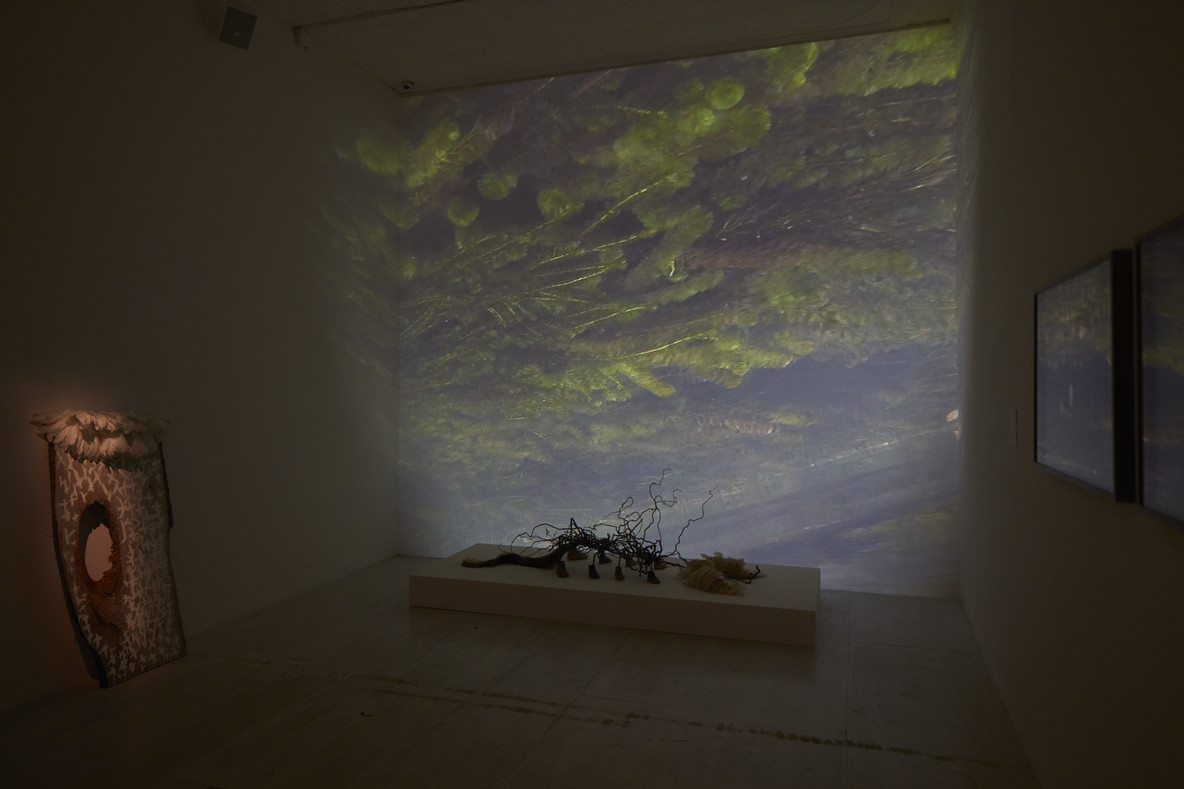
Installation view of MOOD: Studio Museum Artists in Residence 2018–19
I’m trying to think about lived experience in a location through the lens of the landscape.
In reanimating animals and objects that have previously lived lives, are you thinking about mysticism at all?
There’s definitely a kind of a magic or mystical or even spiritual component in the work. It comes from taking little things that I have seen growing up, family stories and lore, especially Hoodoo. I’m curious about how the materials that are used in ritual, the materials that are used in iconography, and signage even, are part of this built environment where landscape and human-made objects come together in ways that are both mundane and also loaded in a spiritual or metaphysical way. It’s also a way for me to collapse time, because I try to make it so that you’re never quite in the past, present, or the future. It’s all collapsed; I think bringing in certain spiritual totems helps me to do that.
Does reusing works in different installations continue this idea of collapsing time?
For me, it helps to create a long arc in the work. I’m really influenced by long mythological tales, the hero’s journey, whether that’s West and Central African cosmologies, Greek epics, or something like Gilgamesh or Sunjata. So for me, taking bits and pieces of one video and streaming it into the next helps string together each project as part of a world. It’s a narrative but also an environment that becomes more and more built. These layers of images or objects solidify this place that I am taking the viewer through.
Each time, the work doesn’t necessarily need to live as an installation, but when it does, it’s a way for the viewer to really situate themselves in this world and sink into it. So even if you see just one element, you can consider it not only for what it is but how it also relates to what’s going on in the world and the other works that are shown with it in other formats.
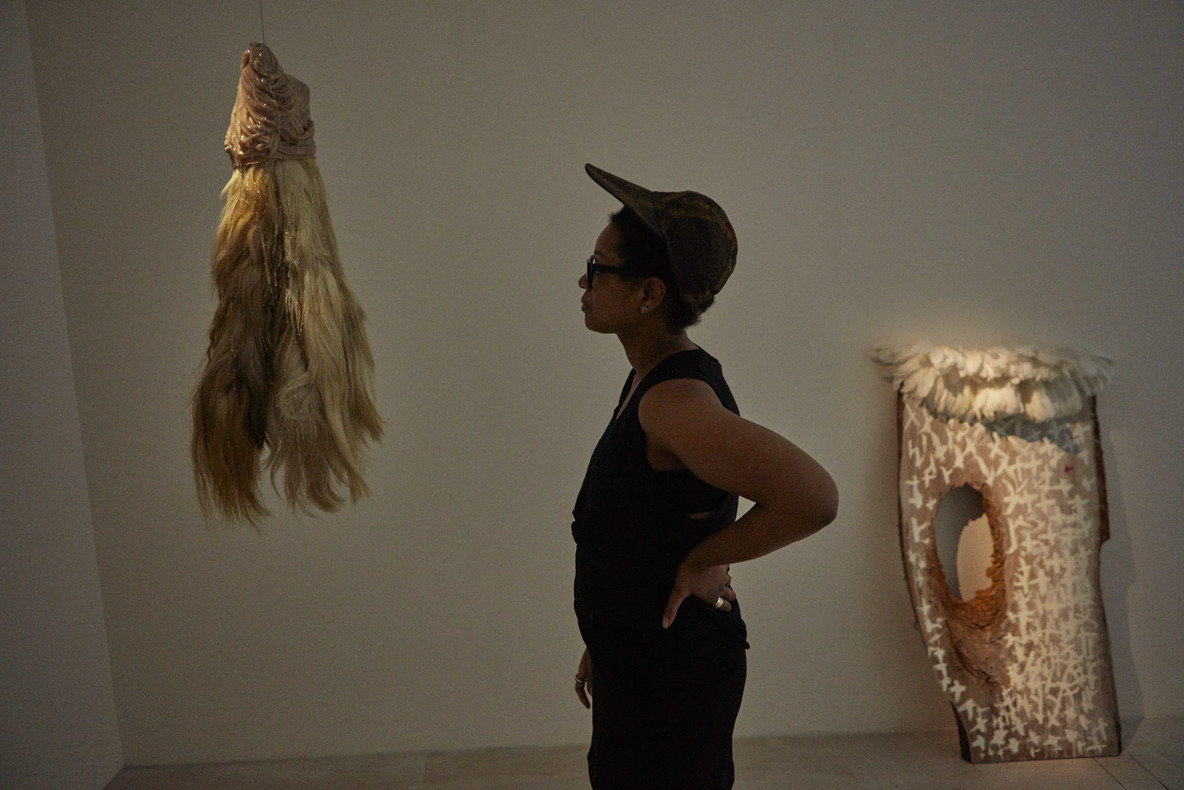
Allison Janae Hamilton pictured in MOOD
In many ways you straddle two worlds, creating works in and of the South while rooted in the uptown Studio Museum residency. How does your process change with location?
The feeling of time is a lot slower in the South versus here [in New York] and I think that does influence the way I work. Going home to make the photos and videos and then coming here to edit, place, and categorize them is reflective of my mood in each place. There’s a slow steadiness to the locations where I shoot, whether that’s northern Florida or our farm in Tennessee. Both places feel really open; there’s a lot of literal space. New York feels task-driven and task-oriented so I am able to be more efficient. I structure the practice to use the strengths of the locations and how I am feeling in each to choose which work I am doing where. We’ll see once I start making more sculpture in the South, but so far it’s been video and photos down there and sculpture and editing sound up here.
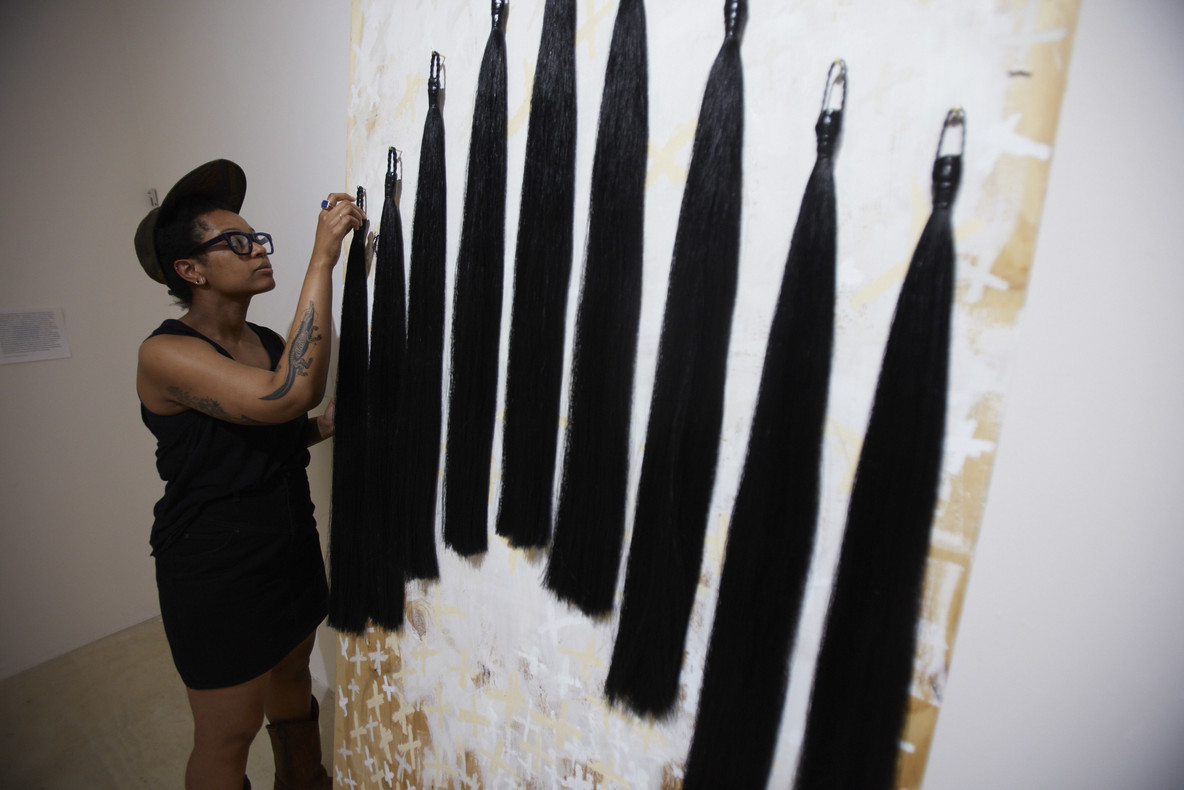
Allison Janae Hamilton installing horse hair
Can you talk a little bit about the horse hair you use and its significance?
Any time there’s an actual element that’s used, whether an organic material that’s plant-based or hair or a cloth, it’s something that I’m thinking about in a totemic way to signify an experience. It’s usually an element that is part of my own upbringing or part of my family’s culture or the culture of the region. My family had horses and mules in Tennessee and so horsemanship and a lot of things related to the land are part of my experience as a Black American person. [In my work,] I’m layering on to that these larger, archetypal messages and feelings that permeate our culture in a way that’s attached to a certain type of object.
So not only, what does the horse mean in terms of the landscape where I’m from, but also, what does it mean throughout culture? Using all those meanings and letting them speak through the work and letting them tell a part of the story of the work. Hair also has this remnant quality; it’s really heavy in a spiritual way. It’s got this aftermath of a life and a kind of feeling that comes with it. I’m trying to bring in elements that signify life lived, and hair is definitely something that does that. Nails as well, claws and talons, bring in a violent element. Other materials bring in more of a peaceful element. Water is something that does both: it’s dangerous and pleasurable.
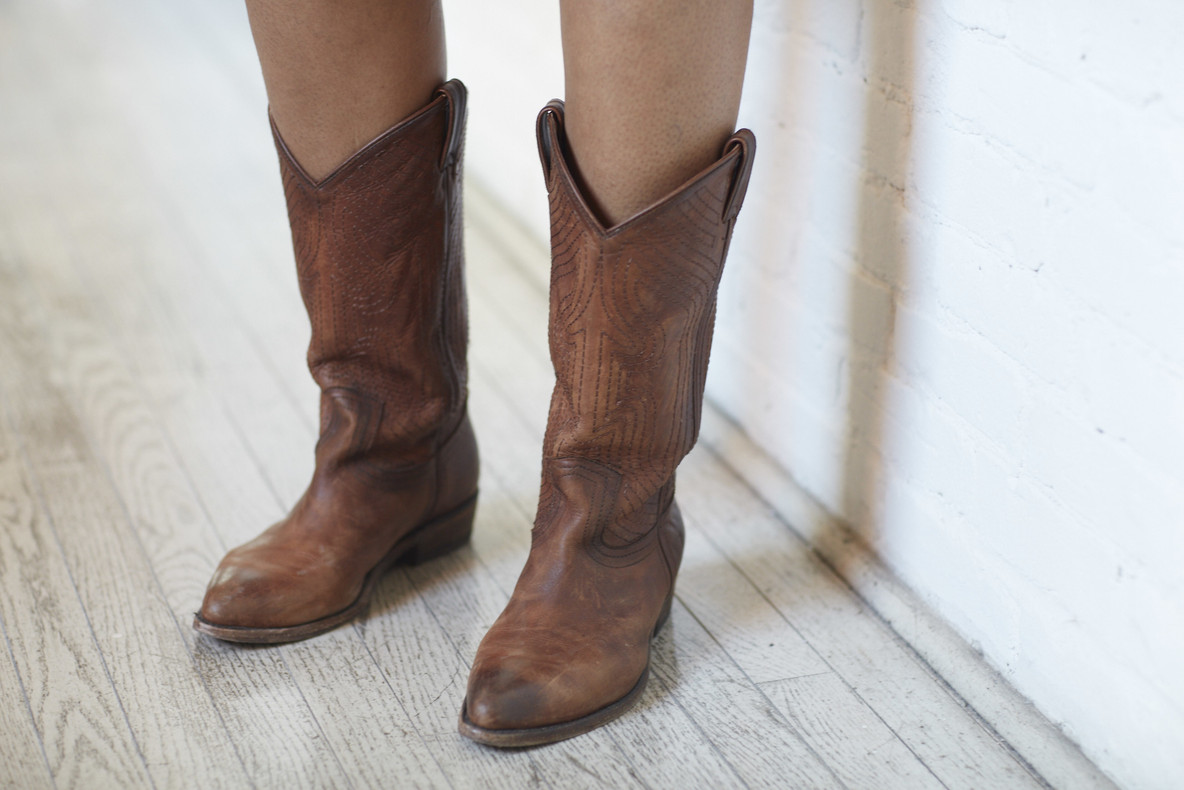
Allison Janae Hamilton in her cowboy boots during exhibition installation
The South has an interesting set of narratives, not just one.
Your pieces seem to be reconstructed vestiges of, as you said, a life lived. Can you speak a little bit more about the eerie, leftover nature of the work?
The South has an interesting set of narratives, not just one. One of the older narratives of the Southeast United States was that it was this fertile place that was prime for growth, for leisure, especially the coastal South, for tourism, at one point. All these narratives had in common this idea, as gruesome and violent as it was, of promise and what this land could offer, what this land could bring to the country, to the landowners, the early settlers of the region that were also slaveholders.
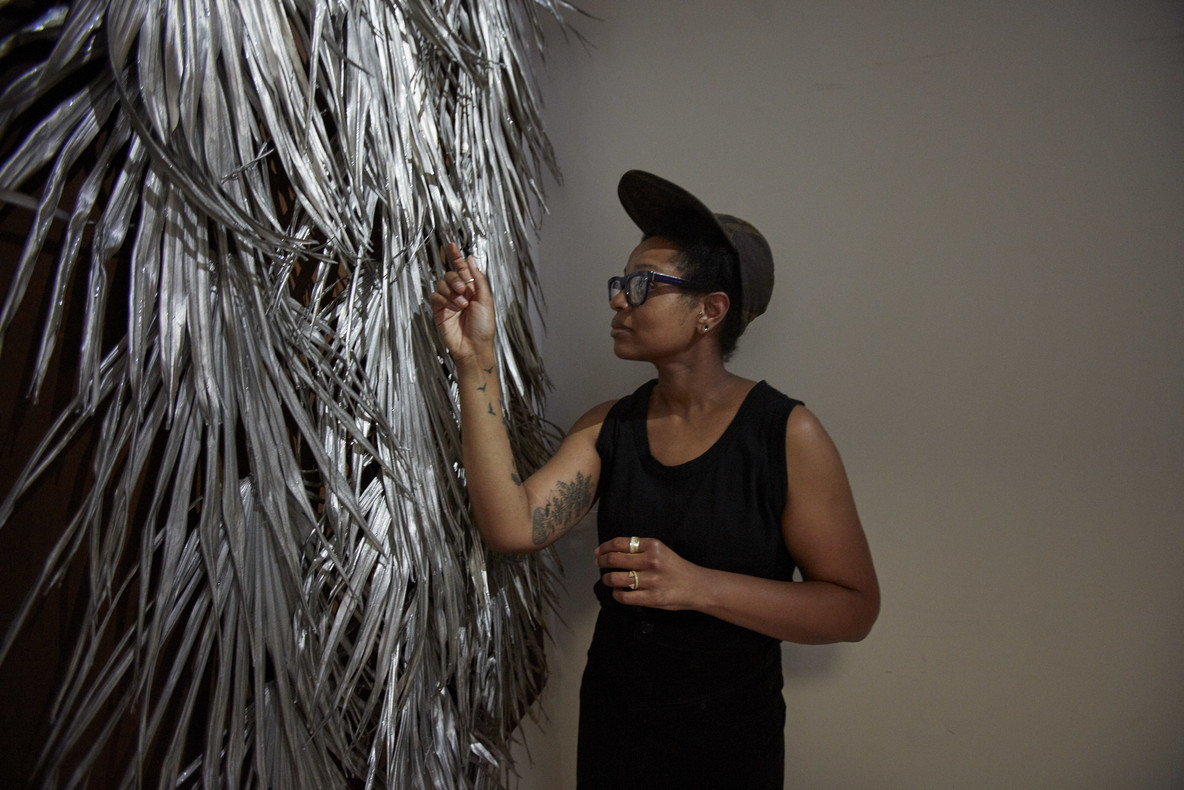
Installation view of MOOD: Studio Museum Artists in Residence 2018–19
I’m trying to turn that on its head and speak toward the horrific institutions of labor that went on, not only in the Antebellum period but through and past Reconstruction and on into the present. How these legacies of labor and landscape are the other side of the coin of this narrative of beauty and fertility and promise of the region.
So you have these economies of tourism and then you also have these economies based off of the fruits of the landscape. In Wacissa, the video that’s the centerpiece of my project at PS1, I show a site where limestone was excavated by slave labor to bring cotton back and forth between the Gulf to the Panhandle into Georgia. So you have this video that looks very beautiful in a way because the blues and greens and the water which is calming, and then at the same time you are drowning in it and you are buried in this terrain.
It seems a lot of your locations come from your research into the history of a specific ares. Are there other ways you location scout? And what is your process in constructing the characters that appear in your photographs?
Sometimes it’s very specific, like I want to shoot those rivers for a particular reason, and other times it’s more of a pull I’m feeling toward the landscape, what it looks like, and then I’ll learn something about it. Northern Florida is one of the most beautiful places I’ve ever been, but at the same time I am aware of the history and I am aware of the contemporary realities as well. So sometimes I will start with a research narrative and then other times it comes in the reverse.
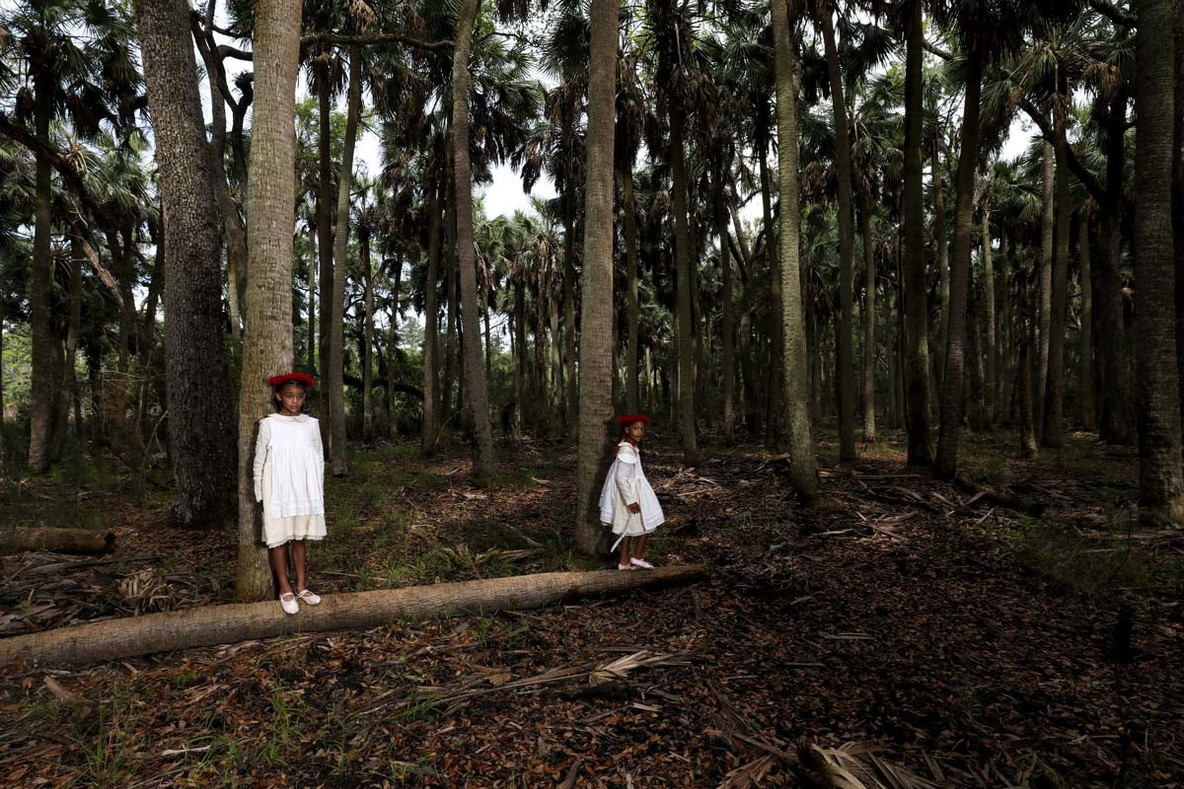
Allison Janae Hamilton’s Sisters, Walkulla Country (2019)
In terms of the ways that people are dressed, I try to make it so that you don’t know where you are in time, especially the photographs in the show, which are Three girls in sabal palm forest II and Sisters, Wakulla County, FL. I wanted those outfits to look like school-kid outfits that could have been at any time period. Because there’s a default way of thinking about the South which is in the past and backward, I’m trying to fit all of these timescapes into one frame. So it’s important for me that, whatever the subjects are wearing, it not look too vintage or too contemporary. Then there’s always some element of masking or headpieces that also brings in a ritual type of energy to the photograph. I think of the work as just a slice of where we are now but that slice contains any kind of temporal plane within it.
Related articles
-
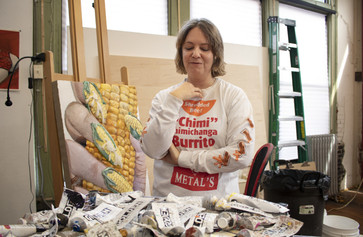
Studio Visit
Gina Beavers
The artist talks to curator Oliver Shultz about living and working in Newark, and listening to true crime podcasts while she paints.
Oliver Shultz, Gina Beavers
Jul 18, 2019
-
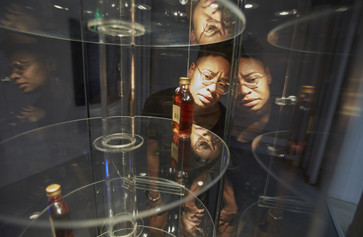
The Weight of Objects
Sable Elyse Smith shares her mixtape and discusses the brutality of ordinary things.
Sable Elyse Smith, Hanna Girma
Jul 17, 2019

